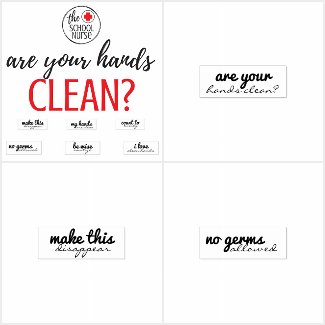Self-Care for New School Nurses:
Prioritizing Your Wellness
School Nurse Work Boundaries
Starting your career as a school nurse is both exciting and challenging. You’re stepping into a role where you’ll have a direct impact on student health and well-being, but don’t forget that your well-being matters just as much! Self-care isn't just a nice-to-have—it's essential for maintaining your energy, enthusiasm, and mental clarity throughout the school year.
Here are a few simple ways to prioritize your self-care and create a sustainable routine:
1. Manage Stress Before It Manages You
It’s easy to get caught up in the fast-paced environment of a school health office. Between seeing students, handling emergencies, and managing documentation, stress can quickly build. Try incorporating short stress-reducing practices into your day:
- Take breaks: Step away for a few minutes to breathe or stretch. Schedule & take your lunch break at a time that is most convenient for your office.
- Practice mindfulness: Mindfulness apps or deep breathing exercises can help calm your mind.
- Delegate when possible: Ask for help from your team or office staff when tasks pile up.
These small actions can reduce stress, leaving you feeling more balanced and focused.
Finding work-life balance is crucial in the early stages of your school nursing career. Without healthy boundaries, it’s easy to feel burnt out. Be mindful of the time you spend at school and make an effort to unplug when you’re off duty. Here’s how:
- Set a schedule: Try to maintain consistent work hours and avoid taking schoolwork home unless it’s absolutely necessary.
- Unwind with hobbies: Whether it's reading, exercising, or catching up with friends, engage in activities that recharge your energy.
- Use your personal time wisely: Take care of yourself by planning self-care activities like a quiet evening or a weekend adventure.
Balancing work with personal life will help you be a more effective and happier nurse.
Establishing professional boundaries is key to sustaining your well-being in the workplace. Here are a few areas to focus on:
- Communication boundaries: Let colleagues and students know when you are available and when you need uninterrupted time to focus. It’s okay to say no if your plate is full!
- Emotional boundaries: While it’s natural to care deeply for your students, protect your emotional energy by not taking on more than you can handle.
- Time boundaries: Be mindful of your working hours and avoid staying late consistently. Prioritize tasks that need immediate attention and save others for the next day.
Setting these boundaries allows you to give your best while also protecting your energy and maintaining your mental health.
A Final Thought
Remember, taking care of yourself is not selfish—it's an essential part of being a successful school nurse. When you're rested, balanced, and stress-free, you're better equipped to care for your students and handle the daily demands of your role. Make self-care a priority so you can continue making a positive impact without burning out!
Ready for some more ideas? Download this list of 60 ideas created just for school nurses!

.png)
.png)



.png)


.png)

.png)
.png)






